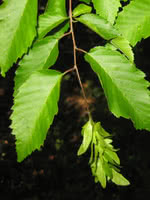Mon-Fri 9am - 5pm Mountain time
Japanese Maple vs Blue Beech
Acer palmatum
Carpinus caroliniana
NOT AVAILABLE THIS SEASON - MIGHT RETURN
NOT AVAILABLE THIS SEASON - MIGHT RETURN
Japanese Maple is one of the most popular accent maples. Its long, fingered lobed leaves can be variegated in the summer with lighter shades of green, red, or even purple. Its autumn colour is a brilliant red that is uncommon in most plants, which adds nice contrast to your yard when planted near other trees.
The Japanese Maple is a diverse variety, there are over 1,000 cultivars with different sizes, shapes, and colours.
This species is extremely popular with bonsai enthusiasts.
Blue Beech is a beautiful, ornamental tree with enticing features. The foliage transforms throughout the season, offering a kaleidoscope of color. New leaves emerge reddish-purple, transforming to dark green, and then turn striking shades of yellow, orange, and red in fall. Once all the foliage has dropped, grooved, blue-grey bark becomes striking on a winter landscape.
Blue Beech has an attractive globular shape and has been successfully grown in both full shade and full sun locations. Make sure you provide ample moisture to ensure this tree thrives.

